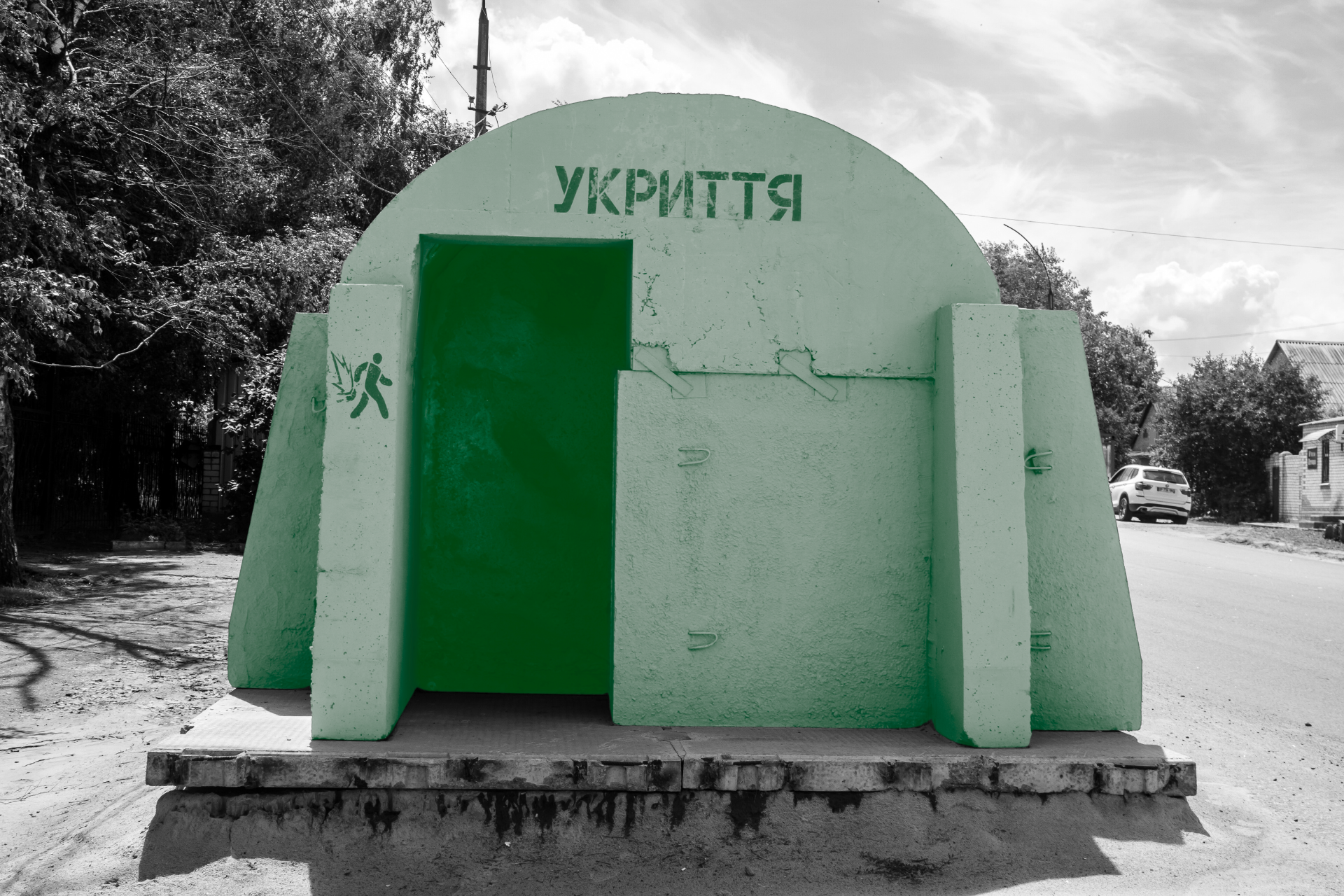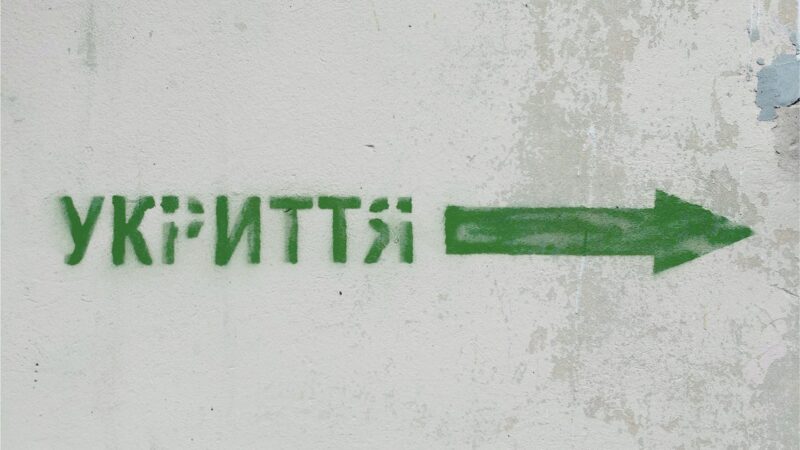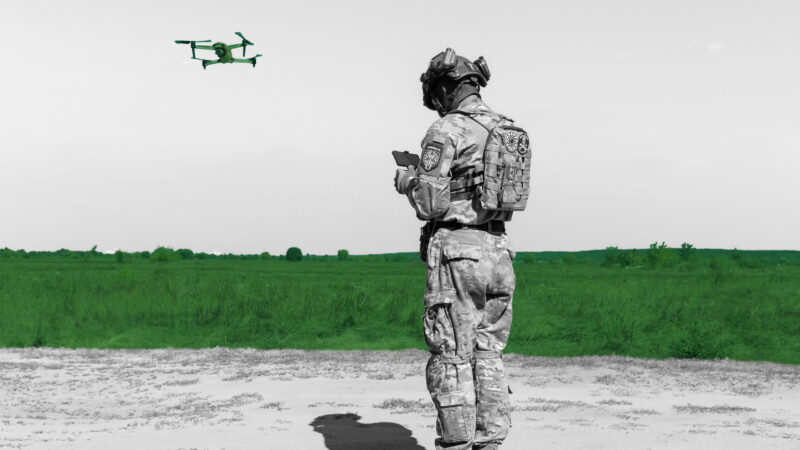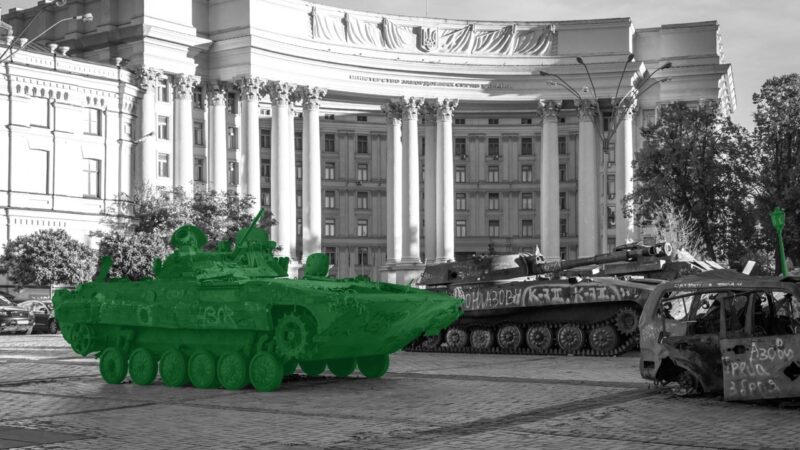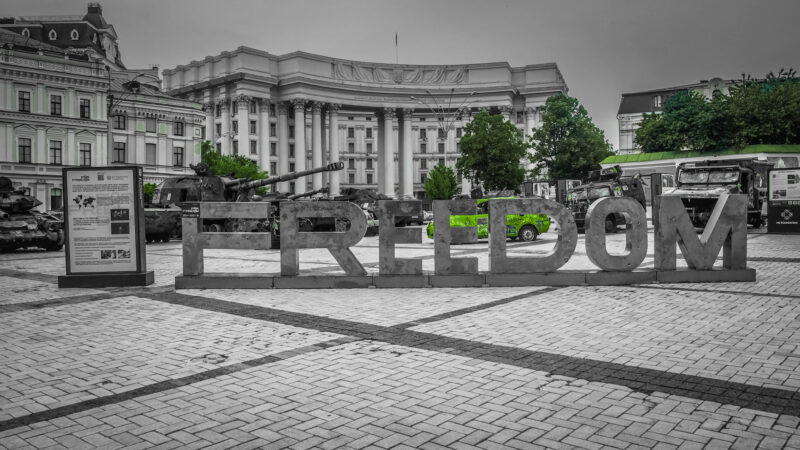Mussolini, Hitler, Putin: Old Masterminds behind the Militarization of the Young
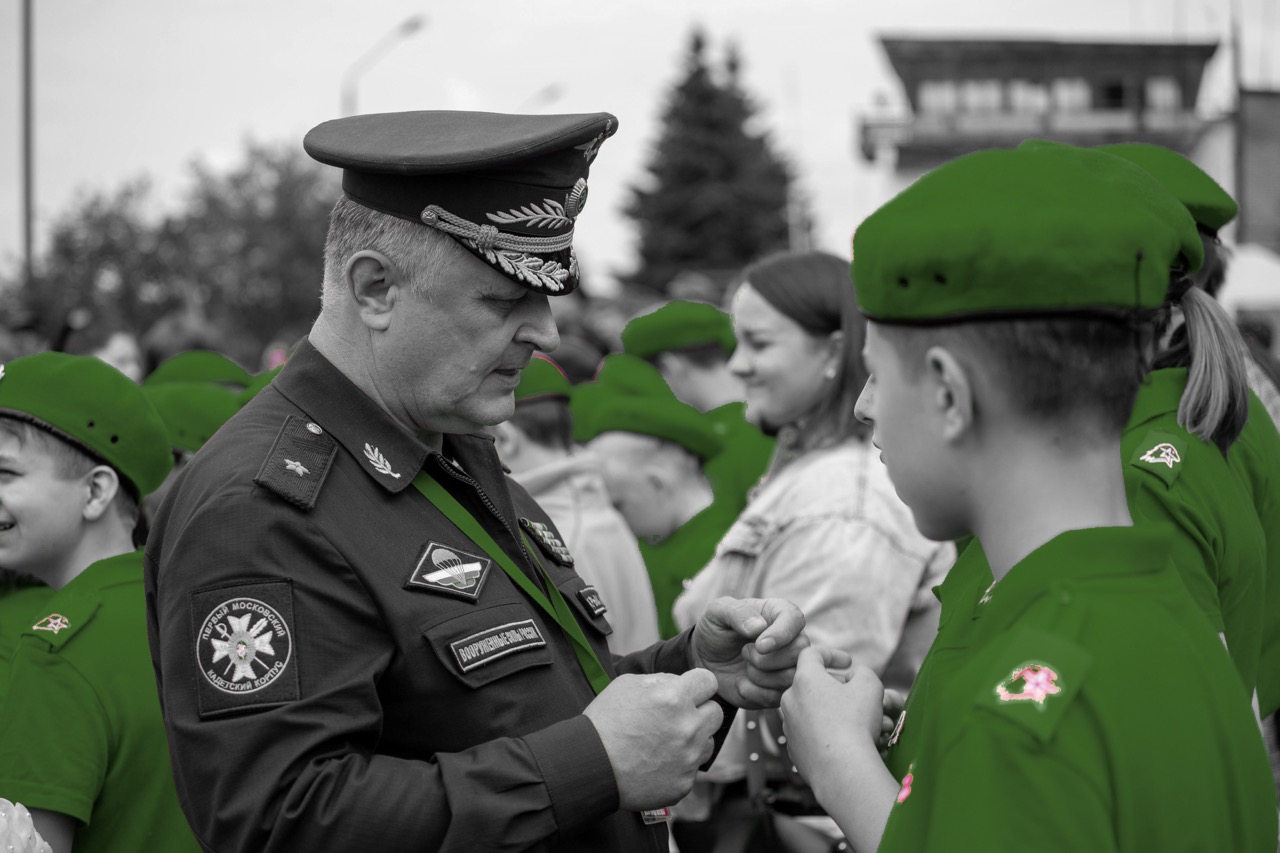
In late 2024, regular missile, shelling, and drone attacks are continuing to destroy Ukrainian cities and villages, causing distress to those who resided in the country or fled it because of Russia’s full-scale aggression since February of 2022. Russia’s authoritarian, autocratic regime, combined with skillfully orchestrated state propaganda, managed to mobilize the entire country into another ruthless, senseless neo-imperialistic war on European territory. As if “Nie Wieder / Never Again” fell into oblivion, Europe is yet again in the epicentre of a war, not only against Ukraine but also against the core European value of democracy.
Among numerous approaches to waging successful warfare, education and instrumentalization of youth have always played an immense (yet often overseen and understudied) role in crafting and manifesting non-democratic ideologies, like fascism, that eventually become cultural axioms. Although we often vehemently refuse to learn from history, revisiting some of its darkest pages demonstrates how instrumentalizing and weaponizing youth—the research focus of this piece—has always been a successful strategy of fascist governments, be it in Mussolini’s Italy, Hitler’s Germany, or now, Putin’s Russia. This troika of murderous masterminds not only perfected the art of ideological and informational warfare, but it also crafted and created its own child soldiers, ready to kill for their Motherland and their charismatic and inspirational leaders. That is why revisiting the phenomenon of fascist youth organizations cross-culturally and cross-generationally can better inform our understanding of the European theatre of war and encourage our attempts towards preserving democracy and peace.
The first lesson about fascist youth came, ironically enough, from the birthplace of humanity, Italy, under Mussolini’s reign. The most well-known lesson was taught by the land of thinkers and poets, Germany, under Hitler. Putin’s Russia is now imposing the third fascist lesson.
Mussolini’s Italy: Ballila boys, Piccole Italiane, and Figli della Lupa
Mussolini’s Italy, as the cradle of modern-day fascism, provides an excellent example of how a combination of censored communication, skillful propaganda, and perverted nationalism can easily result in mass authoritarianism and autocracy. As a junior partner to Nazi Germany, entering the war only in 1940, Italy is often overlooked on the world arena compared to the German hegemon. Meanwhile, the fascist Weltanschauung had certainly been crafted by the Duce Mussolini way before it turned quite Germano-centric, and the world got to know the Führer Hitler (Aterrano & Varley 2020). The same applies to youth organizations.
Opera Nazionale Balilla was an Italian Fascist youth organization, active between 1926 and 1937 and eventually absorbed by the Gioventù Italiana del Littorio, a youth section of the National Fascist Party (Emanuele 1926). The organization was officially created for the assistance as well as physical and moral education of youth. Named after a Genoese boy, Giovanni Battista Perasso, nicknamed Balilla, who allegedly started the revolt against the Habsburg forces of the once-powerful Austro-Hungarian Empire in 1746, the organization praised revolutionary activity and nationalism. For the Balilla youth, Rome was considered the eternal mother-martyr. They believed in the genius of their fascist leader, Bennito Mussolini, the “Holy Father of Fascism,” and in the eventual ascent and resurrection of Italy as the empire it was entitled to be. Curiously, the organization had already started forming during the Italian cultural movement of futurism, which eventually acted as a catalyst for fascism. Futurism focused on patriotism, physical courage, technology, youth, progress, and glorification of violence.
The organization’s outreach was impressive: it consisted of Balilla boys, who would eventually become Avanguardisti (avant-guardists) at the age of 18, Piccole Italiane (little Italian girls), aged 8 to 14, and even younger children, the Figli della Lupa (children of the she-wolf), aged 6–8 (“Figli” n.d.). Membership in the Opera Nazionale Balilla was initially voluntary but quickly became mandatory for boys between 6 and 18 and for girls between 8 and 14. Eventually, in 1936, even a pre-Balilla kindergarten was created for even younger children, under 6. The organization quickly became a very powerful cultural institution.
A particular kind of indoctrination and groupthink gradually became the norm, where italianità (or Italian-ness), patriotism, and fascism were used interchangeably. Youth were called the “fascists of tomorrow” and were eventually left without any real competition, as the fascist regime effectively banned all other youth organizations. Children would wear uniforms resembling the infamous camicie nere (black shirts), and in addition to regular meetings, they would have to participate in Fascist Saturdays and the heavily ideologized summer camps (Crociani & Battistelli 2011). The war mindset was crafted, and the future of the fascist country was on an unmistakable trajectory.
Hitler’s Germany: Napolas and Hitlerjugend
Similar to Mussolini’s Italy, Hitler’s Germany also had a system of elite boarding schools, institutions that fused some harsh educational Spartan practices, elements of the ethics of Prussian cadet corps, and the prestige of some elite British public schools. The organizations were known as the Nationalpolitische Erziehungsanstalten (National Political Education Institutes), or Napolas for short (Roche 2015). Founded in 1933 as a birthday present for Adolph Hitler, the Napolas trained and educated the future elite of the Third Reich from the age of 10 in all spheres of social, political, and cultural life. By the end of WW II, the Greater German Reich, with territory from today’s France to Poland, counted more than 40 Napolas.
According to Nazi propaganda, the Napolas embodied the most socialistic elements of National Socialism, and they were essential in realizing the Nazi ideal of the Volksgemeinschaft. Students from working-class and farming backgrounds were particularly privileged as a social class. Their original regional and ethnic identities were to be subsumed into a new, omnipresent and omnipotent German identity, just as their region itself had been subsumed into greater Germany. Many were sent to work in factories and mines, in order to understand the lives of German workers and to eventually connect all social classes for the greater cause. Die bürgerliche Bildung (cultivation of the middle class) was essential for the Napolas. Hitler insisted on the methods of Herrschaft durch Schulung (domination through schooling/training). One of the crucial cultural missions of the Napolas was Germanisierung (Germanization) of the newly conquered parts of Europe, especially its eastern territories. Even in the pre-war years, numerous Napola pupils were regular parts of the so-called Osteinsätze (eastern missions). The goal of this was to win over the Volksdeutsche to the Nazi regime through skillful propaganda, combined with hard work: after all, they would live with the farmers for extended periods of time, up to several weeks, help them with the harvest, and succeed with their gradual Nazi indoctrination and acculturation.
The Napolas were also used to spread, explain, and apply Nazi ideology abroad. That is why they also took part in exchange programs with several US and British academies and boarding schools—all top-notch educational establishments (Roche 2021). Initially, both the British and American participants in the Napola exchange initiative were ready to give the Nazis the benefit of the doubt, even if they remained unconvinced by the Third Reich’s aims and ideals.
Naturally, Mussolini’s Italy quickly became the most frequent destination for weeks-long extended trips by Napola pupils. The aim of such visits was a soft form of the so-called “cultural diplomacy,” overall strengthening of the cult of fascism, and normalization of the axis alliance, all while the Napola pupils acted as cultural ambassadors between fascist Italy and the quickly expanding Third Reich. The cross-cultural bridging of fascist youth was very successful.
Putin’s Russia: Volunteers of Victory, Yunarmiia, Dvizhenie Pervykh
Similarly to the once-fascist Rome and Berlin, today the official Moscow also regards children and young people as a vital part of its ideology that eventually became known as a uniquely Russian type of fascism, or Ruscism (Snyder 2022). That is why the Russian government has launched a series of campaigns aimed at Russia’s youth to breed and fortify their sense of patriotism and to encourage them to regard Russia’s war in Ukraine as a continuation of the Second World War, against German Nazism. Like formerly Balilla and the Napolas, young people are regarded by Russia’s leadership as a crucial audience for its messages about the past, present, and—most importantly—the Russian future.
One youth group, known as the “Volunteers of Victory,” was established by the Russian state already in 2015, shortly after the annexation of Crimea in 2014 (Volunteers n.d.). The organization’s mission is to preserve Russia’s version of history and numerous memories of Russia’s past victories. Currently, there are 650,000 members of the Volunteers of Victory in 89 regional branches across Russia. Members are mostly teenagers, who participate in a wide variety of activities, ranging from meeting war veterans, recording and documenting their storytelling, and organizing war-related trivia games to cleaning military cemeteries and war monuments and memorials. The goal of the organization is to create mass awareness about the heroic actions of Soviet and Russian armies, historically and now, and to intensify the feeling of Russia as a military superpower.
Russia’s biggest youth organization is called Yunarmiia (Youth Army). Often compared to the Hitler Youth, it was established in 2016 under the Defense Minister Sergei Shoigu, with the goal of preparing children for their careers in the state-controlled military apparatus. Just like Mussolini’s Italy or Hitler’s Germany, the Russian state promises young people power, self-actualization, and above all social belonging. The young people are encouraged to believe they are the future of a glorious country. The apathetic and apolitical are left to gaze at this fantasy world from the outside. The Youth Army is not just an ordinary cadet school, and the regular indoctrination about patriotism on steroids is not just idle talk. The members are literally prepared and taught how to “die for the Motherland.” Employees of the Wagner group teach them how to handle weapons and kill; former convicts teach them patriotism, and camouflaged nets and military uniforms add to the ritualism and the affect.
Another notable national children’s and youth movement is called Dvizhenie Pervykh (Movement of the First; Kislov 2023). In February 2024, Movement of the First consisted of more than 5 million children. President Putin also noted that even more people—about 7 million—have already taken part in the movement’s events. Putin was reported to praise the movement as “a huge army” and their activities as “interesting, beautiful deeds!” (Tass 2024). The president was specific in listing how, through the activities of the movement, Russia wants to show just how much the country should be proud of: Movement of the First planted 2 million trees to commemorate the day of Russian national unity, wrote 3 million letters to Russia’s selfless and courageous freedom fighters, is currently defending [sic] Russia’s holy motherland in the framework of the special military operation [sic], and has collected 400,000 books for their peers in the Donbas and Novorossiia [sic] regions (occupied territories of Ukraine).
Ruscism, Generation Z: Setting the Stage for the Future of Europe
In addition to the activities of numerous youth organizations and movements, Russia has dominated on the discursive battlefield and set a very particular ideological stage in all spheres of education, from kindergartens and elementary schools all the way to colleges and universities. Nothing is left to chance. In 2023, all schools in Russia and in Russia-occupied territories introduced mandatory new high school history textbooks that teach Kremlin-crafted and approved versions of reality in the best traditions of Nietzschean “use and abuse of history.” The books provide a complete glorification of the Soviet totalitarian regime and rehabilitation of the crimes of Stalinism, alongside the omission of state-sanctioned genocides, purges and pogroms, and forced labor camps.
Already in September 2022, Russian schools nationwide started holding “Conversations That Matter”—ideologically heavy lessons aimed at instilling patriotism (Merkureva 2023). Half a year later, officials in far eastern regions of the Russian Federation came up with another patriotic project, called “ABCs of Important Matters,” to be taught in kindergartens and elementary schools. The patriotic alphabet includes words like “Armiia” (Army), “Vera” (Faith), “Chest” (Honour), “Otechestvo” (Fatherland), “Rodina” (Homeland), and “Traditsii” (traditions). In schools throughout Russia, teachers try to find age-appropriate strategies of connecting children and young people with the Russian soldiers fighting in Ukraine (ibid.). The youngest children are given simple tasks, such as drawing and colouring pictures of the letter “Z” ribbon or standing in formations to make the shape of that letter. The (non-Cyrillic) letter “Z” has been turned into a symbol of the war and has become something of a badge for those who support it. Older children must write letters to soldiers deployed to Ukraine, especially soldiers who are from their towns or regions, and make care packages to send to them. Schools are now being supplied with desks featuring various images and biographical details of distinguished soldiers, providing a vivid reminder of the “proud history of Russian military heroism” that young people are invited to join. In memory of those high-school graduates who went to fight in Ukraine and died, schools also installed the so-called “hero desks.”
In the longer term, similar to Mussolini’s Italy or Hitler’s Germany, patriotic education in Putin’s Russia aims to establish a deep and enduring sense of patriotism, duty, and love toward the country in the next generation of Russian citizens, along with a great deal of respect for the military as an institution. The key element to this is Russia’s use and abuse of history—that is, the systematic presentation of its own version of history, memory, and justice to new youth groups while cutting them off from opposing worldviews.
Mussolini managed, at least for a while. So did Hitler… The strategy works… The creation of such a Weltanschauung will have consequences: just like in fascist Italy or Nazi Germany, Russia is succeeding in creating a powerful generation of easily manipulatable toy soldiers who can be molded to blindly believe their convincing, charismatic leader (sounds familiar?), demonstrate their loyalty and obedience ad absurdum, and contribute to the normalization of the “new normal.” So “never again” is about to happen…again.
Works cited
Aterrano, Marco Maria, and Karine Varley (eds). 2021. A Fascist Decade of War: 1935–1945 In International Perspective. London: Routledge.
Crociani, Piero, and Piero Paolo Battistelli. 2011. The Black Shirts: 1935–1945. Gorizia: Libreria Editrice Goriziana.
Egorova, Daria. 2024. “V shkolakh ishchut soldat dlia putinskoi voiny: Propaganda i deti” [Schools are looking for soldiers for Putin’s war: Propaganda and children]. Radio Svoboda, 15 June 2024. https://www.svoboda.org/a/v-shkolah-ischut-soldat-dlya-putinskoy-voyny-propaganda-i-deti/32994058.html.
Emanuele, Victor, III. 1926. “LAW N. 2247 OF 3 APRIL 1926: Establishment of the National Organization ‘Balilla’ for the Assistance and Physical and Moral Education of Youth.” The Consolidation, 3 April 1926. http://www.97legione.siena.it/L_2247_1926.html.
“Figli Della Lupa (Dizionario di Storia).” n.d. Enciclopedia Italiana. https://www.treccani.it/enciclopedia/figli-della-lupa_(D/izionario-di-Storia)/.
Kislov, Alexander. 2023. “Putin predlozhil prigliadet’sia k ‘pioneram’ v kachestve nazvaniia dlia detskogo dvizheniia” [Putin suggests looking at “Pioneers” as name for children’s movement]. Kommersant, 19 April 2023. https://www.kommersant.ru/?from=logo.
Merkureva, Karina. 2023. “Lektsii naemnikov, voennaia podgotovka dlia shkol’nikov i ugolovnye dela: Kak voina otrazilas’ na detiakh v Rossii” [Lectures by mercenaries, military training for schoolchildren, and criminal cases: How the war has affected children in Russia]. Nastoiashchee vremia [Current Time TV], 1 June 2023. https://www.currenttime.tv/a/kak-voina-otrazilas-na-detyah-v-rossii/32437404.html.
“Opera Nazionale Balilla (Dizionario di Storia).” n.d. Enciclopedia Italiana. https://www.treccani.it/enciclopedia/opera-nazionale-balilla_%28Dizionario-di-Storia%29/.
Roche, Helen. 2015. “Second Book Project: The Third Reich’s Elite Schools—A History of the Napolas.” Helen Roche personal site, 12 August 2015. https://helenroche.com/work/2015/08/12/second-book-project-the-third-reichs-elite-schools-a-history-of-the-napolas/.
———. 2021. “Young Nazis: How I Uncovered the Close Ties Between British Private Schools and Hitler’s Germany.” The Conversation, 18 November 2021, https://theconversation.com/young-nazis-how-i-uncovered-the-close-ties-between-british-private-schools-and-hitlers-germany-172017/.
Snyder, Timothy. 2022. “The War in Ukraine Has Unleashed a New Word,” The New York Times Magazine, 22 April 2022. https://www.nytimes.com/2022/04/22/magazine/ruscism-ukraine-russia-war.html.
Tass. 2024. “Putin zaiavil, chto v ‘Dvizhenii pervykh’ sostoit uzhe pochti 5 mln rebiat” [Putin declares that the ‘Movement of the First’ already has almost 5 million kids]. Tass News Agency, 1 February 2024. https://tass.ru/obschestvo/19878367.
“Volunteers.” n.d. Vserossiiskoe obshchestvennoe dvizhenie [International patriotic movement, or Team of Volunteers for the 75th anniversary of the Victory]. Volontery Pobedy. https://xn--90abhd2amfbbjkx2jf6f.xn--p1ai/.

